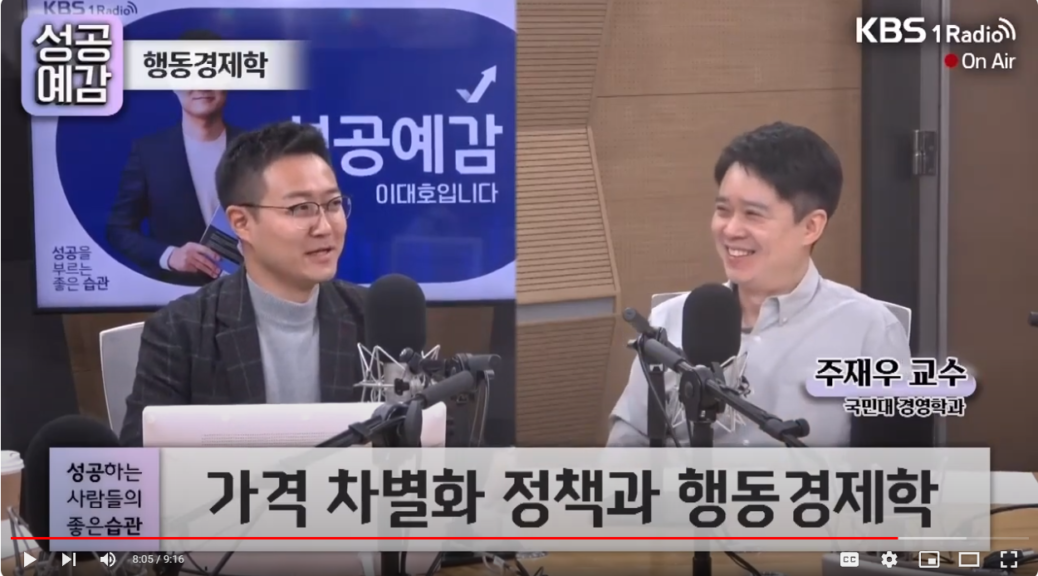회사들은 가격 차별화를 기본적으로 하고 있는 거지요?
“마케팅이 가장 자신있어 하는 일이 가격으로 시장을 나누어서 기업의 이익을 극대화하는 것입니다. 하지만 행동경제학자 입장에서는, 가격으로 차별화된 소비자들이 서로 다른 사회 계층에 속하면서 사회 갈등의 원인이 될 수 있다고 봅니다”
*행동경제학개론
가격 차별화 정책과 행동경제학
– 수요에 따른 #가격차별화전략 에 대한 사례와 평가
– 비행기 좌석, 영화관, 놀이공원 등의 차별화 전략
– 기업과 소비자 간의 시각 차이 등
– #주재우 교수 (국민대 경영학과) #kbs1라디오 #라디오 #KBS라디오 #시사라디오 #KBS1Radio #성공예감이대호입니다 #성공예감 #이대호
***
Reference
DeCelles, Katherine and Michael I. Norton (2016), “Physical and Situational Inequality on Airplanes Predicts Air Rage,” Proceedings of National Academy of Science, 43, 44-67.
We posit that the modern airplane is a social microcosm of classbased society, and that the increasing incidence of “air rage” can be understood through the lens of inequality. Research on inequality typically examines the effects of relatively fixed, macrostructural forms of inequality, such as socioeconomic status; we examine how temporary exposure to both physical and situational inequality, induced by the design of environments, can foster antisocial behavior. We use a complete set of all onboard air rage incidents over several years from a large, international airline to test our predictions. Physical inequality on airplanes—that is, the presence of a first class cabin—is associated with more frequent air rage incidents in economy class. Situational inequality—boarding from the front (requiring walking through the first class cabin) versus the middle of the plane—also significantly increases the odds of air rage in both economy and first class. We show that physical design that highlights inequality can trigger antisocial behavior on airplanes. More broadly, these results point to the importance of considering the design of environments—from airplanes to office layouts to stadium seating—in understanding both the form and emergence of antisocial behavior.


